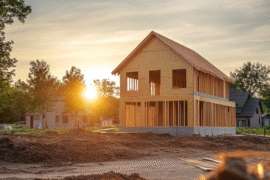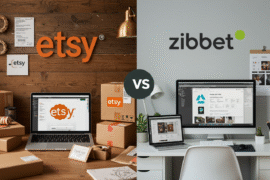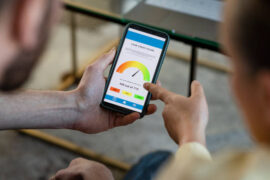This article may contain references to products or services from one or more of our advertisers or partners. We may receive compensation when you click on links to those products or services. Nonetheless, our opinions are our own.
- Introduction
- Assessing Your Financial Situation
- Setting a Home-Buying Budget
- Saving for a Down Payment
- Itemizing Monthly Expenses
- Budgeting for a Down Payment
- Planning for Recurring Homeownership Costs
- Setting a Home-Buying Timeline
- Mortgage Types and Budget Impact
-
Frequently Asked Questions
- What is the first step in budgeting for a house?
- How much should I save for a down payment?
- What other costs should I consider when budgeting for a house?
- Should I factor in an emergency fund?
- What if my credit score is low?
- How do I determine how much I can afford to spend on a home?
- Is it beneficial to get pre-approved for a mortgage?
- What should I do if I can’t afford my ideal home?
- Recommended Reads
Introduction
Buying a home requires more than just a mortgage approval. It involves strategic budgeting, careful savings planning, and a clear understanding of both upfront and ongoing expenses. Use this formatted guide to organize your financial roadmap toward homeownership.
Assessing Your Financial Situation
Before starting your home-buying journey, the first step is to assess your financial situation. Take a detailed look at your income and expenses to determine how much you can afford to allocate toward a home purchase. Consider creating a monthly budget that covers
Fixed expenses: Rent, utilities, internet, insurance
Variable expenses: Groceries, dining out, entertainment
Debt repayments: Student loans, credit cards, car payments
Savings: Emergency fund, retirement contributions
Once you understand your monthly financial commitments, factor in your savings goal for a down payment. A common recommendation is to aim for at least 20 percent of the home’s price to avoid private mortgage insurance (PMI). Below is a breakdown of estimated down payments for different home prices:
| Home Price | 20% Down Payment |
|---|---|
| $300,000 | $60,000 |
| $400,000 | $80,000 |
| $500,000 | $100,000 |
By evaluating your financial standing, you can set realistic savings targets and stay motivated throughout the process.
Setting a Home-Buying Budget
Setting a realistic budget is crucial when buying a home. Start by evaluating your income, savings, debts, and monthly expenses to determine a comfortable price range. A simple budgeting table can help:
| Income | Expenses |
|---|---|
| Salary | Rent/mortgage |
| Bonuses | Utilities |
| Side hustles | Groceries |
| Other income | Transportation |
Beyond the purchase price, plan for additional costs such as
- Closing costs typically range from 2 to 5 percent of the home’s price.
- Home inspection fees: essential for identifying potential issues.
- Property taxes: a recurring cost that varies by location.
- Homeowner’s insurance: Protects your investment against unexpected events.
Understanding these costs ensures you are well-prepared for homeownership.
Saving for a Down Payment
Starting your savings plan early can significantly impact your ability to buy a home. Consider these strategies to accelerate your savings:
- Automate your savings: Set up an automatic transfer to your home fund after each paycheck.
- Cut unnecessary expenses: Cancel unused subscriptions and redirect that money to your savings.
- Utilize windfalls: Put bonuses, tax refunds, or unexpected income directly into your down payment fund.
Beyond the down payment, budget for ongoing homeownership costs such as property taxes, maintenance, and insurance. Below is a sample breakdown of estimated monthly homeownership expenses:
| Expense Type | Estimated Monthly Cost |
|---|---|
| Mortgage payment | $1,200 |
| Property taxes | $300 |
| Home insurance | $100 |
| Maintenance & repairs | $150 |
Preparing for these expenses in advance ensures you can manage your home’s long-term financial demands.
Itemizing Monthly Expenses
Creating a detailed monthly budget is crucial for effective financial planning. By itemizing your expenses, you can gain better control over your finances and ensure your income is allocated efficiently. Key expense categories to consider:
- Housing expenses (rent/mortgage, utilities, insurance)
- Transportation costs (car payment, gas, maintenance)
- Food and groceries
- Personal care and healthcare expenses
- Entertainment and leisure spending
- Savings and investments
- Debt payments (credit cards, loans)
- Miscellaneous expenses (subscriptions, shopping, etc.)
Budgeting for a Down Payment
Saving for a down payment requires discipline and planning. To budget effectively:
- Determine your target down payment amount based on the home’s price and your financial situation.
- Set up a dedicated savings account to track progress.
- Allocate a percentage of your monthly income specifically for this goal.
- Cut unnecessary expenses and redirect those funds into savings.
Planning for Recurring Homeownership Costs
Owning a home involves more than just paying the mortgage. Plan for recurring costs that will impact your budget, including:
- Property taxes: vary based on location and property value.
- Homeowner’s insurance: protects against natural disasters, theft, and other risks.
- Utilities: water, gas, electricity, and waste disposal services.
- Maintenance and repairs: Experts recommend setting aside 1 to 3 percent of your home’s value annually.
- HOA fees: If applicable, factor in homeowner association dues.
| Cost Type | Average Monthly Cost |
|---|---|
| Property taxes | $300 – $600 |
| Home insurance | $75 – $200 |
| Utilities | $150-$300 |
| Maintenance | $100 – $250 |
| HOA fees | $50 – $250 |
Estimating these costs ahead of time ensures financial stability after moving into your home.
Setting a Home-Buying Timeline
Buying a home is a process that can take months or even years. Establishing a realistic timeline helps keep your goals on track. Key phases include:
- Research and preparation (1–3 months): Learn about mortgage options, housing markets, and neighborhoods.
- Saving for a down payment (6–24 months): Set a savings goal and adjust your budget accordingly.
- House hunting (1–6 months): Search for properties, attend open houses, and compare options.
- Closing the deal (1–2 months): Make an offer, negotiate, conduct inspections, and finalize paperwork.
| Phase | Duration |
|---|---|
| Research and preparation | 1–3 months |
| Saving for down payment | 6–24 months |
| House hunting | 1–6 months |
| Closing the deal | 1–2 months |
A clear timeline helps manage expectations and reduces stress.
Mortgage Types and Budget Impact
Understanding mortgage options is essential for securing the best financing. Common types include:
- Fixed-rate mortgages: Offer stable monthly payments, ideal for long-term homeowners.
- Adjustable-rate mortgages (ARMs): Initially lower rates that adjust over time, suitable for short-term buyers.
- FHA loans: Designed for first-time buyers, requiring a lower down payment.
- VA loans: Exclusive to military personnel, with no down payment required.
| Loan Type | Estimated Monthly Payment (for $250,000 loan) |
|---|---|
| Fixed-rate (30 years) | $1,200 |
| ARM (initial 5 years) | $1,000 |
| FHA loan | $1,150 |
| VA loan | $1,175 |
Consider all associated costs, including property taxes and insurance, when choosing a financing option.
Frequently Asked Questions
What is the first step in budgeting for a house?
Assess your income, expenses, savings, and debts to determine what you can afford.
How much should I save for a down payment?
A 20 percent down payment is ideal to avoid PMI, but some programs allow for as little as 5 to 10 percent.
What other costs should I consider when budgeting for a house?
Consider closing costs (2–5 percent of the home’s price), property taxes, homeowners insurance, maintenance, and utilities.
Should I factor in an emergency fund?
Yes, having three to six months’ worth of living expenses saved can cover unexpected repairs or income changes.
What if my credit score is low?
Work on improving your score by paying down debt, making timely payments, and checking your credit report for errors.
How do I determine how much I can afford to spend on a home?
A general rule is to keep total housing costs within 28–30 percent of your gross monthly income.
Is it beneficial to get pre-approved for a mortgage?
Yes, pre-approval clarifies your borrowing limit and strengthens your negotiating position.
What should I do if I can’t afford my ideal home?
Consider broadening your search, compromising on features, or exploring first-time homeowner assistance programs.

Reviewed and edited by Albert Fang.
See a typo or want to suggest an edit/revision to the content? Use the comment form below for feedback.
At FangWallet, we value editorial integrity and open collaboration in curating quality content for readers to enjoy. Much appreciated for the assist.
Did you like our article and find it insightful? We encourage sharing the article link with family and friends to benefit as well - better yet, sharing on social media. Thank you for the support! 🍉
Article Title: Budgeting for a House: Costs You Must Know
https://fangwallet.com/2025/06/19/budget-for-a-house/The FangWallet Promise
FangWallet is an editorially independent resource - founded on breaking down challenging financial concepts for anyone to understand since 2014. While we adhere to editorial integrity, note that this post may contain references to products from our partners.
The FangWallet promise is always to have your best interest in mind and be transparent and honest about the financial picture.
Become an Insider

Subscribe to get a free daily budget planner printable to help get your money on track!
Make passive money the right way. No spam.
Editorial Disclaimer: The editorial content on this page is not provided by any of the companies mentioned. The opinions expressed here are the author's alone.
The content of this website is for informational purposes only and does not represent investment advice, or an offer or solicitation to buy or sell any security, investment, or product. Investors are encouraged to do their own due diligence, and, if necessary, consult professional advising before making any investment decisions. Investing involves a high degree of risk, and financial losses may occur including the potential loss of principal.
Source Citation References:
+ Inspo
There are no additional citations or references to note for this article at this time.












































